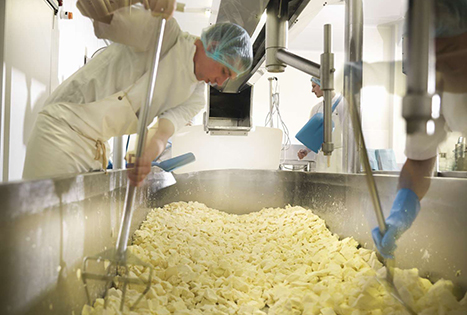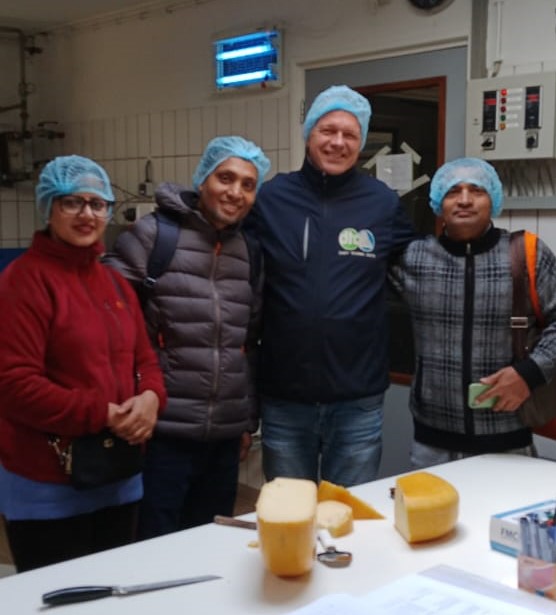The course Milk Processing and Cheese Production provides comprehensive knowledge of milk handling, pasteurization, and processing techniques. It covers various cheese-making methods, fermentation processes, quality control, and hygiene standards. Students gain practical skills in transforming milk into diverse cheese varieties, ensuring safety, consistency, and excellence in dairy production. Also, Cheese production is the process of turning milk into cheese through a series of biological, chemical, and physical transformations. Here’s an overview of the key steps involved in making cheese:

Cheese Production Process
1. Milk Selection
- Type of Milk: Cow, goat, sheep, buffalo, or others.
- Quality Control: Pasteurization is commonly used to kill harmful bacteria unless making raw milk cheese.
2. Acidification
- Starter Cultures (lactic acid bacteria) are added to:
- Ferment lactose (milk sugar) into lactic acid.
- Lower the pH of the milk.
- Develop flavor and prepare for coagulation.
3. Coagulation
- Rennet (an enzyme) is added to curdle the milk.
- Milk separates into:
- Curds: Solid parts (casein protein and fat).
- Whey: Liquid portion.
4. Cutting the Curds
- Curds are cut into small pieces to release more whey.
- Smaller cuts yield harder cheeses (e.g., Parmesan).
5. Cooking and Stirring
- Curds are gently heated and stirred to:
- Firm up the curds.
- Expel additional whey.
6. Draining the Whey
- Whey is drained off, sometimes pressed out, depending on the cheese type.
7. Cheddaring and Milling (for certain cheeses)
- Curds are stacked and turned to further expel whey (cheddaring).
- Then they are cut into small pieces (milling).
8. Salting
- Salt is added:
- For flavor.
- As a preservative.
- To control moisture and bacterial growth.
9. Shaping and Pressing
- Curds are placed into molds and pressed to shape and remove excess whey.
10. Aging (Affinage)

- Some cheeses are aged from weeks to years.
- Affects flavor, texture, and rind development.
- Conditions like temperature and humidity are carefully controlled.
Common Cheese Types by Aging and Moisture Content
- Ricotta Soft No
- Brie Soft-ripened Yes (short)
- Cheddar Semi-hard Yes
- Gouda Semi-hard Yes
- Parmesan Hard Long aging
- Blue Cheese Varied Yes (mold ripened)
Variations in Cheese Production
- Add-ins: Herbs, spices, smoke, mold (e.g., blue cheeses).
- Milk Treatments: Pasteurized vs. raw.
- Rinds: Washed, bloomy, natural, or waxed.
- Cultures: Different bacterial strains for specific flavor and texture.